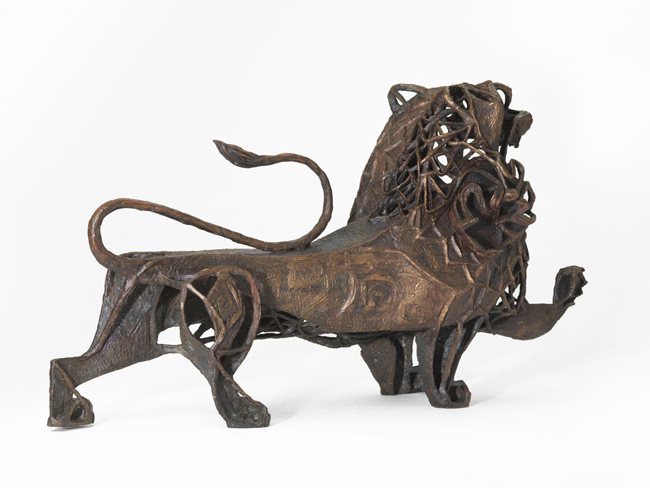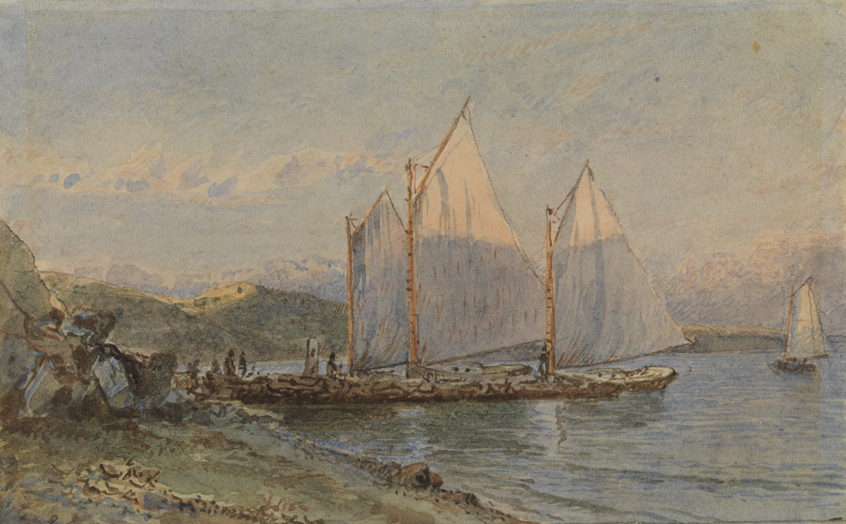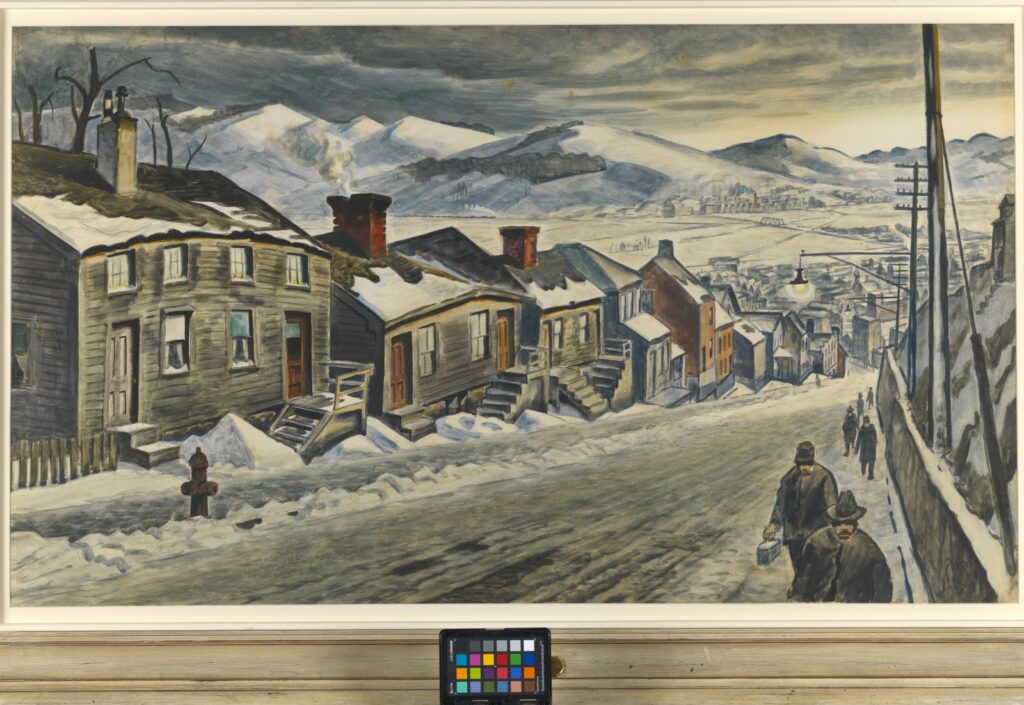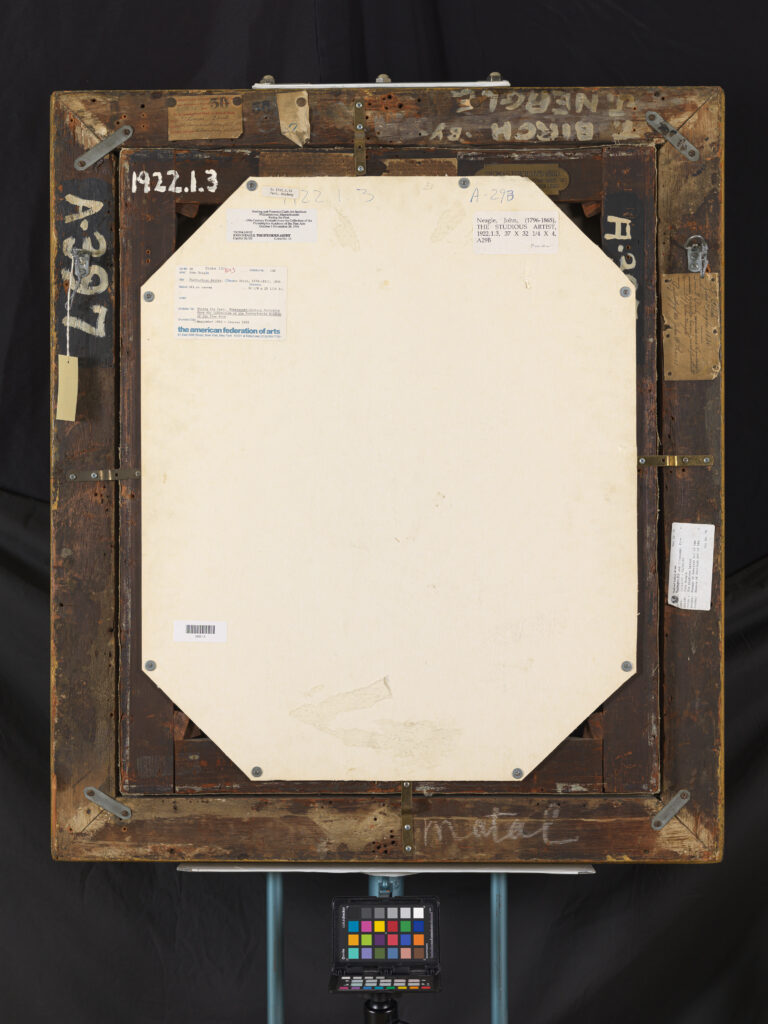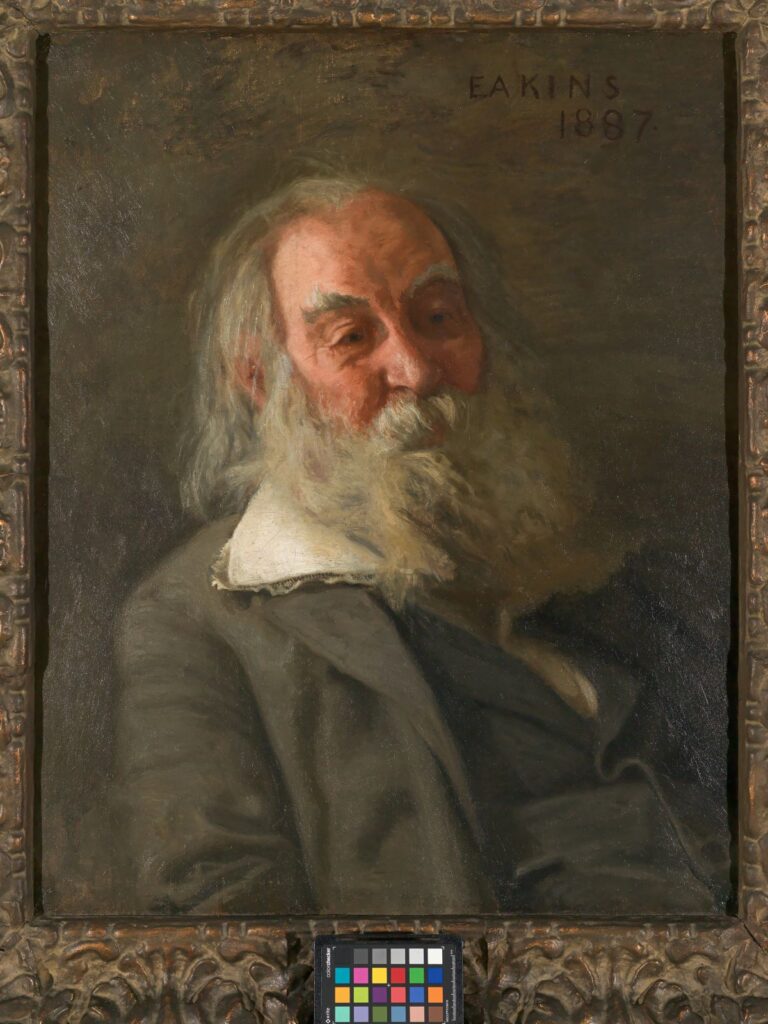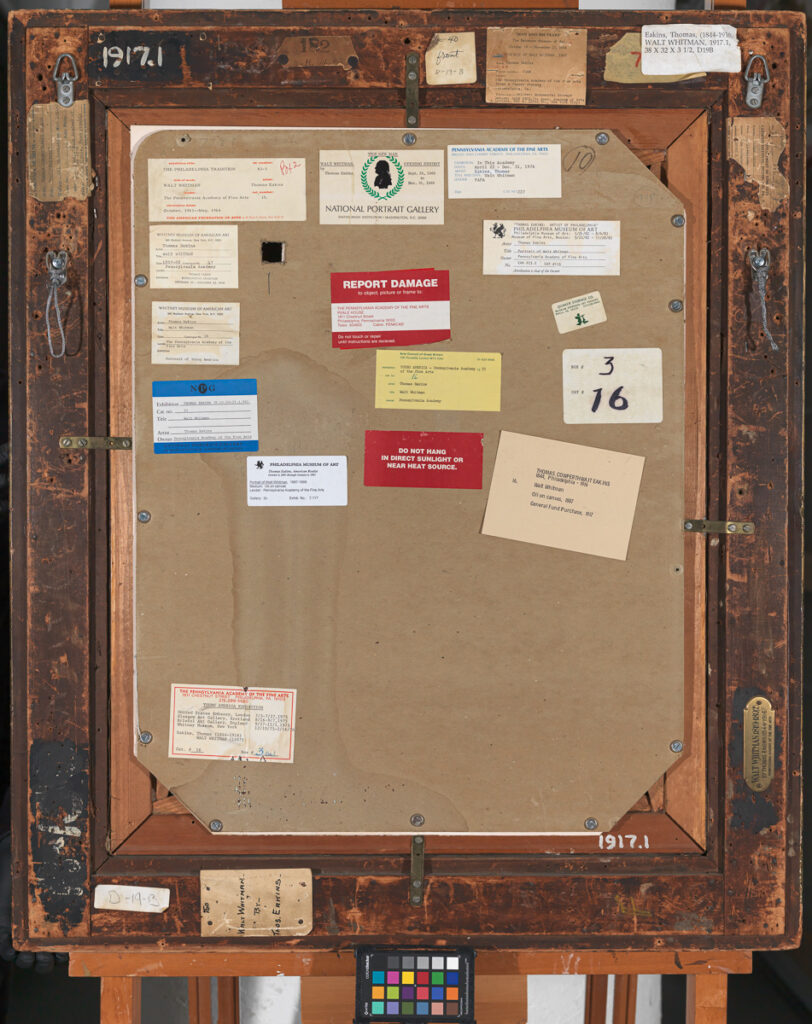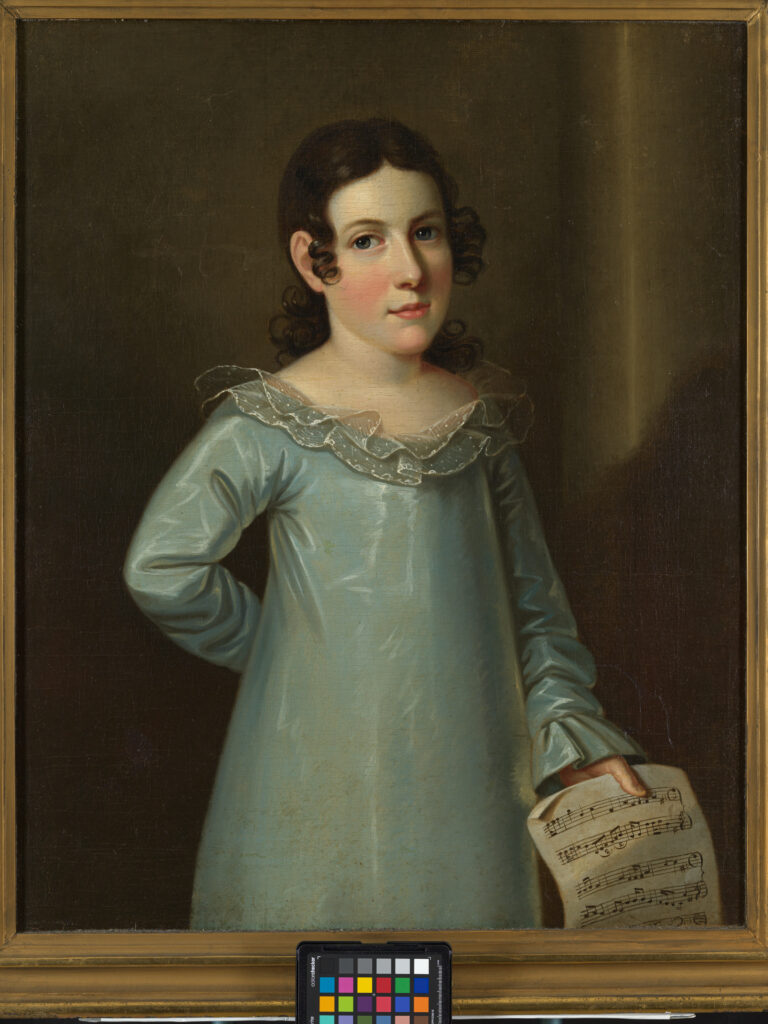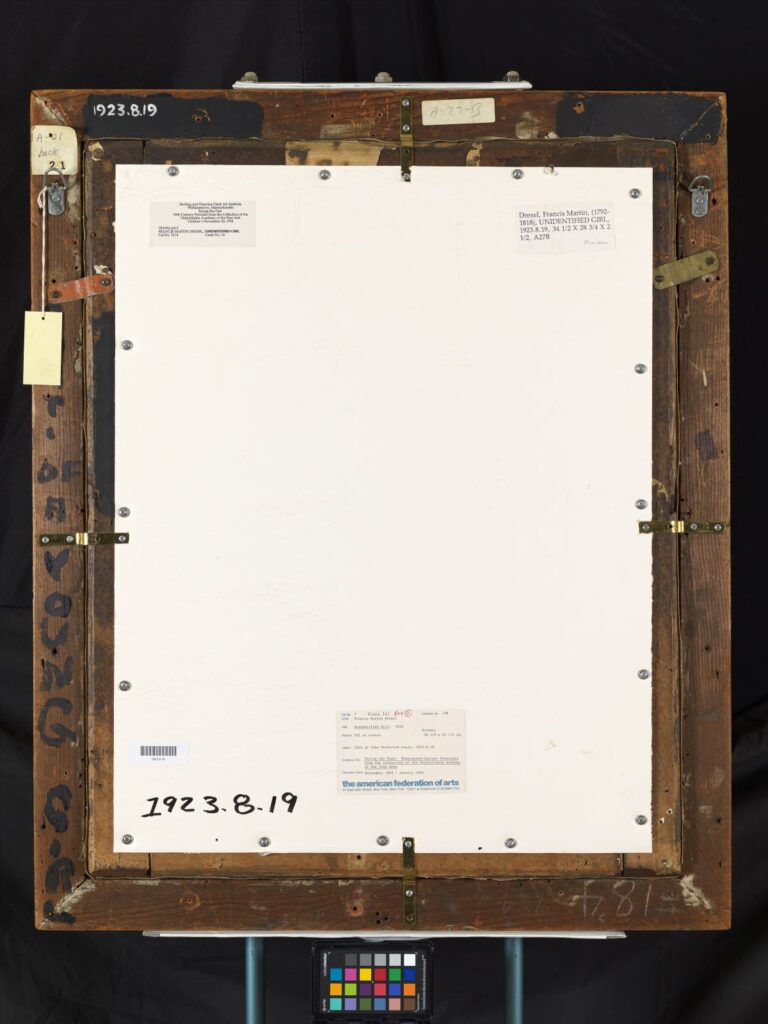Since much of our archival collections are digitized by work study students or interns, the archives has always relied on flatbed scanners to perform the work. The most obvious benefits for the department include reducing user-errors as well as reducing technical training—digitizers would input the correct settings and basically scan the item. The major downside for scanning archival collections is the time required to scan at preservation level standards. Depending on the size of the record/object, the scan could take anywhere from one to three minutes per item. The minutes surely add up for very large collections.
PAFA is very familiar with using digital cameras to digitize collections—the museum has used cameras to digitize/document its permanent art collection and exhibitions since 2007!
Since we had a spare DSLR camera and copy stand, we thought it would be interesting to test out this new method. We selected a small collection to pilot this digitizing method. The work was completed by Annie Thompson (MFA), the archives’ long-term work-study student.
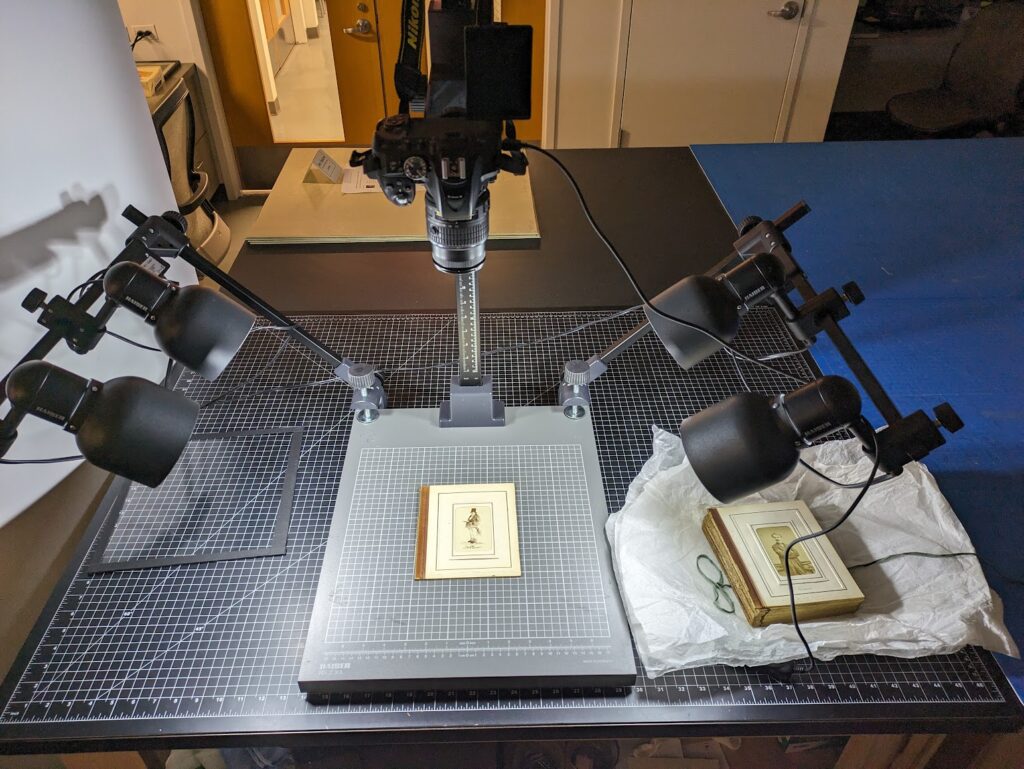
The pilot project allowed us to get a better sense of the speed and image quality to formulate a baseline to compare to the scanning workflow. While cultural institutions typically focus on creating high-quality reproductions, we kept our expectations low since the technical skills required to use a DSLR with all its settings properly was a huge learning curve.
The obvious benefit of using a camera to digitize collections is the sheer speed—it takes literally a few seconds to create a digital capture. One major hurdle we faced with this new approach was the post-processing time. All digital captures required straightening, cropping, and color adjustments. Some workstations in the archives were too slow to use some software, which made post-processing time consuming.
The pilot project selected the Miscellaneous Photographs collection of cartes-de-visite to photograph. Browse the collection here: https://pafaarchives.org/s/digital/item-set/121443


